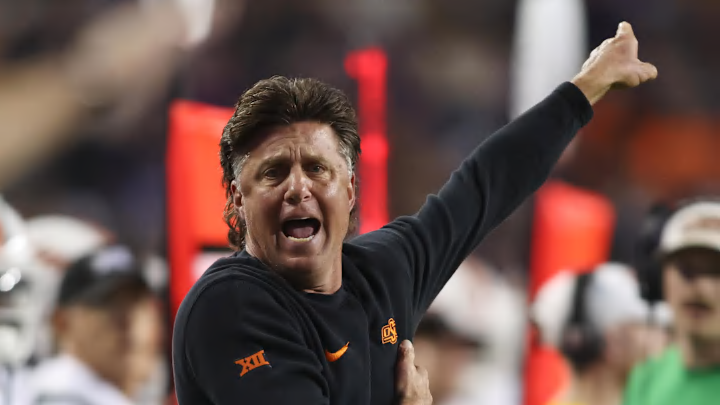$15 Million to Walk Away: Mike Gundy's Buyout Highlights the High Cost of Firing College Football Coaches
Despite a stunning fall from grace, losing 11 of his last 12 games and alienating a large portion of the Oklahoma State fan base, former head coach Mike Gundy is walking away from Stillwater with a $15 million golden parachute, courtesy of a buyout clause in his contract. The payout, guaranteed regardless of performance, shows just how expensive the business of college football has become.
Gundy, once seen as the face of OSU football, had time left on his contract when he was fired. But thanks to a lucrative buyout agreement, Oklahoma State University is now shelling out eight figures to part ways with a coach whose final stretch included lackluster performances and public controversies that strained his relationship with the school’s supporters.
In many ways, Gundy's situation is emblematic of a broader issue in college football: how much is too much when it comes to firing underperforming coaches?
A Shifting Landscape in College Football
College football programs have long been willing to write massive checks in the name of chasing championships. But with the landscape shifting—thanks to Name, Image, and Likeness (NIL) deals, a bustling transfer portal, and looming revenue-sharing models—the economics are more complex than ever.
In the past, universities could justify massive buyouts by treating head coaches like the centerpiece of the program. Now, they’re also expected to manage NIL budgets, navigate donor expectations, and compete in an increasingly free-agent-like player market. Allocating tens of millions toward firing one coach becomes a lot harder when you're also trying to attract and retain players who can leave at any time.
Ironically, the NIL era has provided more job security for head coaches. Universities now have more financial commitments spread across players and marketing deals, making them more hesitant to fire a coach knowing it’ll cost them not just the buyout, but also threaten their overall financial flexibility.
How Much Is Too Much?
Mike Gundy’s $15 million buyout is eye-popping but it’s not even the worst on paper.
According to Sports Illustrated, if Georgia were to fire head coach Kirby Smart, he’d reportedly be owed over $118 million. Former Oklahoma head coach Lincoln Riley, now at USC and still a villain to many OU fans, could pocket around $90 million if he were terminated. Texas’ Steve Sarkisian, another coach sitting on a hefty buyout, rounds out the list of examples of just how financially dangerous these contracts have become.
With numbers like these, it often makes more sense for schools to ride out a rough patch, reinvest in top-tier assistant coaches, or spend more on player development through NIL channels than to blow up the program by firing the head coach. In today’s market, continuity might be cheaper and more strategic than starting over.
The Bigger Picture
College football is big business, and schools are still chasing glory. But the rules of engagement are changing. Firing coaches isn't as simple, or affordable, as it used to be. As the NIL era grows and players become more central to the sport’s identity and marketing potential, programs must rethink how they spend.
For Oklahoma State, the Gundy era ended with a thud and a $15 million invoice. For other programs watching from the sidelines, it’s a cautionary tale: sometimes, it’s not about whether a coach deserves to be fired. It’s about whether the school can afford it.
